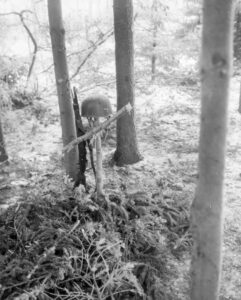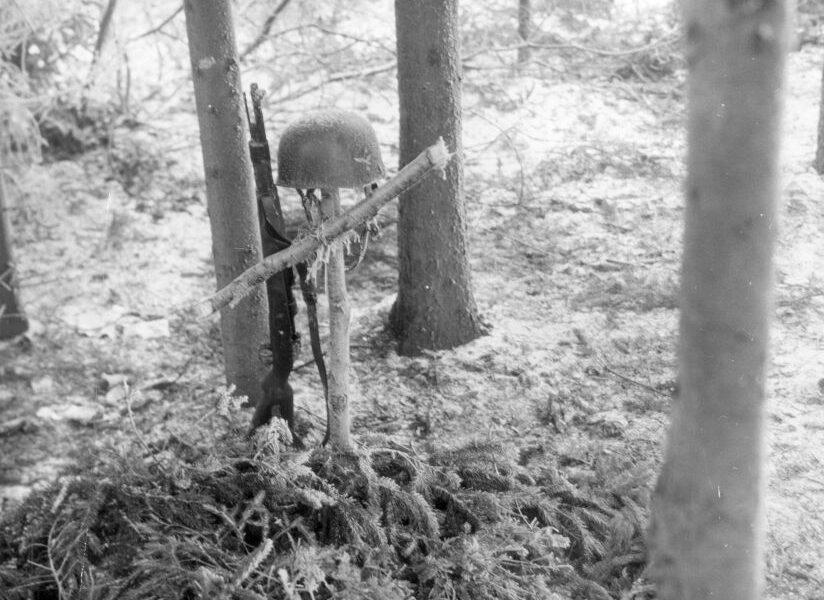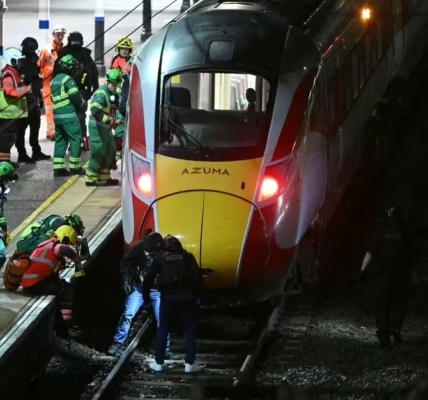The final resting place – A silent testimony to the war near Bastogne, January 1945 _de

On January 3, 1945, in the midst of the icy winter of the Battle of the Bulge, a silent but striking image was captured near the Belgian town of Bastogne: a simple grave marked by a wooden cross, a German steel helmet, and a mounted rifle. It marks the final resting place of an unknown German soldier, fallen in one of the bloodiest battles of the final months of the war.
This improvised grave symbolizes the unspeakable suffering of millions of soldiers who lost their lives in World War II—regardless of nationality, creed, or command. The cold earth of the Ardennes became a mass grave for many young men who died far from their families in a war whose origins and aims they often did not understand or choose.

The Battle of Bastogne was part of the so-called Ardennes Offensive (“Operation Wacht am Rhein”), launched by surprise by the German Wehrmacht in December 1944. The goal was to divide the Western Allies and recapture the port of Antwerp. However, the advance stalled, and Bastogne—a strategically important transportation hub—became the scene of fierce fighting between German troops and U.S. Army units, particularly the 101st Airborne Division.
Amidst these battles, in freezing temperatures and under constant artillery fire, thousands of soldiers on both sides died. Often, there was no time for official burials. Comrades dug simple graves by the roadside or among fallen trees—using whatever they had at their disposal: a cross made of branches, a helmet, a rifle. These improvised burial sites were an expression of respect and humanity amid the inhumanity of war.

The grave shown here doesn’t tell a great story. It doesn’t represent heroism, triumph, or defeat. Rather, it tells of a single person who fell—far from home, without a name, without a monument. And yet this soldier deserves to be remembered—not because he fought for a cause, but because he was a human being whose life was taken.
Such images confront us with the true cost of war. They are not propaganda, not glorification, but silent memorials. The steel helmet on the cross reminds us how interchangeable life became in war—how many thousands of times such scenes were repeated, often without anyone noticing. The soldier was one of many, but to someone he might have been a son, brother, father, or friend.

Today, almost eight decades after the end of the Second World War, we have a responsibility to keep the memory alive—not only of the major events, but also of the small, human stories. This grave near Bastogne is one such story. It reminds us not to take peace for granted, but rather as the result of decisions, dialogue, and empathy.
The forests of the Ardennes are quiet today. Where artillery once thundered and machine guns rattled, birds sing. But the earth there still bears traces of the past: rusted helmets, splintered ammunition, and sometimes—as here—the memory of a lost life. History isn’t just what’s written in books. It lives on in places, images, and memories like this one.

When we look at such images, we shouldn’t seek blame or justification. Instead, we should ask ourselves: What can we learn from this? How can we prevent such tragedies from happening again? The answer lies not in slogans or ideologies, but in compassion—the understanding that every person has a life, a story, a dignity.
This grave, simple yet deeply moving, stands for all those who did not return. For all those who were swallowed up by history. And for the hope that we will emerge from the past wiser, more humane, and more peaceful into the future.










